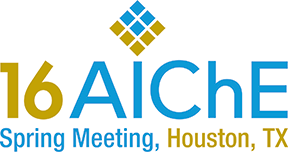

Oily water, a mixture of hydrocarbon residues and water, is contaminated water released during normal operations at an oil refinery. An oily water or industrial sewer system collects process flows and can be combined with area drains to collect potentially contaminated surface runoff from the on plot process paved areas as well as areas where spillages and wash water may occur. Surface runoff includes precipitation and fire water which is drained to catch basins, or area drains, through a network of gravity drainage piping and manholes. A clean storm water system collects precipitation from unpaved areas, roofs, roads and other areas not likely to be subject to contamination for direct offsite discharge. An oily water system needs to safely transfer collected flows to treatment or storage facilities to prevent contamination from impacting human health or the environment.
Refineries that segregate the oily water collection system from storm or fire water flows may drain runoff by gravity directly to one influent lift station at the entrance to the treatment plant, without using any intermediate lift stations. However, with combined systems the reliance on gravity conveyance can lead to excessive excavation depths and increased sewer construction complexity. The use of lift stations strategically placed throughout a combined collection network can simplify underground sewer piping networks, accommodate high water tables, and provide functional isolation for complexes or units within a refinery.
The design of an oily water lift station is distinct from that of municipal or highway related storm water lift stations due mainly to the industrial nature of the inflows, which typically include non-flammable flows but can occasionally include limited amounts of flammable and combustible hydrocarbons. The potential for explosive atmospheres in oily water lift stations, typically sealed and vented for VOC emission compliance, presents what is to some, an unacceptable risk and has led to a design philosophy of minimizing or even eliminating the use of lift stations in this service, regardless of the increase in installation complexity. Also system flexibility can be increased and environmental risk associated with operating an oily water sewer system can be better managed by including lift stations. Even though relying on lift stations presumes lower system reliability, the use of stand-by equipment, emergency power supply, and automatic control and alarm systems have been successfully used to lessen this risk.
This paper describes methods for managing risks associated with operating oily water lift stations through design considerations, and related operational and maintenance procedures. Compliance with current US codes and standards for fire, electrical, and VOC emission issues are discussed for gravity drain systems with lift stations, as well as use of complementary closed drain pressurized collection systems, chemical sewers, and dedicated collection systems for constituents not compatible with atmospheric gravity drain systems. However, specialized systems such as Benzene Waste Operations NESHAPs compliant collection networks are not included in this discussion.
Presenter(s)
Language
Pricing
Individuals
| AIChE Member Credits | 0.5 |
| AIChE Pro Members | $19.00 |
| Fuels and Petrochemicals Division Members | Free |
| AIChE Graduate Student Members | Free |
| AIChE Undergraduate Student Members | Free |
| AIChE Explorer Members | $29.00 |
| Non-Members | $29.00 |
